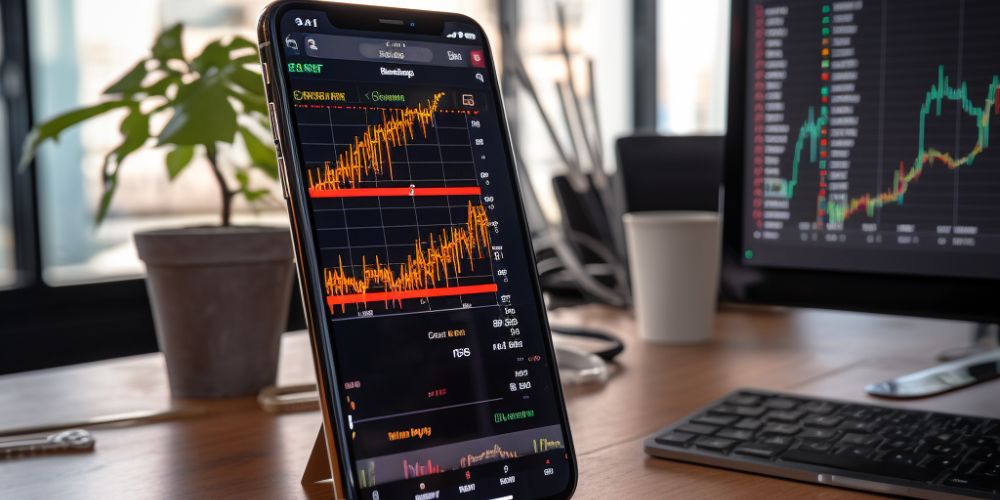Forex trading, also known as currency trading, is a popular investment option that allows individuals to buy and sell currencies in the global market.
To navigate the intricacies, it is essential to understand the concept of a pip in forex trading.
In this comprehensive guide, we will explain what a pip is, how to calculate it, why it is important, and provide valuable tips for trading with pips.
What is a Pip in Forex Trading?
A pip, short for “percentage in point,” is a unit of measurement used in Forex trading to indicate the smallest price movement in a currency pair.
It represents the fourth decimal place for most currency pairs but can be the second decimal place for currency pairs involving the Japanese yen.
For example, if the EUR/USD currency pair moves from 1.2500 to 1.2501, it has moved by one pip.
Understanding Pip Values
Pip values are not fixed across all currency pairs and lot sizes. Here are some additional points to help you understand pip values better:
Currency Pair Sensitivity:
Different currency pairs have varying levels of sensitivity to pip movements. For example, currency pairs with higher volatility, such as GBP/JPY, may have larger pip values compared to less volatile pairs like EUR/USD.
Understanding the sensitivity of different currency pairs can help traders identify opportunities and manage their risk accordingly.

Different Lot Sizes:
Apart from standard, mini, and micro lots, Forex brokers may also offer fractional lot sizes.
These vary in size and pip value, allowing traders to have more precise control over their positions. It’s important to understand the lot size you are trading and how it affects pip values.
Pip Value Calculation Example:
Let’s say you are trading the EUR/USD currency pair, which has a pip value of $10 for one standard lot (100,000 units).
If the price moves by 10 pips in your favor, your profit would be $100 (10 pips x $10 per pip).
However, if you are trading a smaller lot size, such as a mini lot (10,000 units), the pip value would be $1, and your profit for the same 10 pip movement would be $10.
Pip Value in Different Currencies:
Keep in mind that the pip in forex trading value is denominated in the quote currency, which is the second currency listed in a currency pair.
For example, in the GBP/JPY currency pair, where the quoted currency is the Japanese yen, the pip value will be denominated in yen.
Traders must be aware of the conversion rate between the currency pair and their account’s base currency to understand the monetary value of pips accurately.
Importance of Pip in Forex Trading
Pips play a crucial role in Forex trading, not just as a measurement unit, but in several other aspects as well.
Here are additional points to highlight the importance of pips:
Tracking Price Movements:
Pips allow traders to track and analyze price movements in currency pairs accurately.
By monitoring the number of pips a currency pair has moved, traders can identify trends, support and resistance levels, and make informed decisions related to entering or exiting trades.
Calculating Profits and Losses:
Understanding pips is essential for calculating potential profits and losses in Forex trading.
By knowing the pip value and the number of pips gained or lost in a trade, traders can accurately determine their financial outcomes.
This information is crucial for risk management and assessing the profitability of trading strategies.

Risk and Reward Ratio:
Pips help traders calculate the risk and reward ratio for each trade.
By setting appropriate stop-loss orders and take-profit levels based on the number of pips, traders can ensure that their potential losses are limited while maximizing their potential profits.
A favorable risk and reward ratio is a key element in successful trading.
Position Sizing:
Pips are also crucial in determining the appropriate position size for each trade.
By considering the desired risk per trade, stop-loss level, and the number of pips at risk, traders can determine the appropriate lot size to align with their risk tolerance and account balance.
Proper position sizing is essential for risk management and capital preservation.
Tips for Trading with Pips
To trade effectively using pips, consider incorporating the following tips into your Forex trading strategy:
Utilize Technical Analysis:
Alongside tracking pip movements, utilize technical analysis tools and indicators to identify potential trade setups.
This could include trend lines, support and resistance levels, moving averages, and more. Technical analysis helps traders make informed decisions by considering price patterns and historical data.
Combine Pips with Fundamental Analysis:
While pips are primarily concerned with price movements, understanding the underlying fundamental factors impacting different currencies can enhance your trading decisions.
Stay updated with economic news, geopolitical events, and central bank announcements that can influence currency prices.
Test Strategies Using Demo Accounts:
Practice trading with pips using demo accounts offered by Forex brokers.
These accounts allow you to trade with virtual money without risking real capital, providing an opportunity to test different strategies and gain confidence in executing trades based on pip movements.

Adjust Stop-Loss Orders Based on Volatility:
Volatility can impact pip movements, and it’s important to account for this when setting stop-loss orders.
More volatile currency pairs may require wider stop-loss levels to avoid premature exits, while less volatile pairs may require tighter stops to minimize risk.
Keep Emotions in Check:
Emotional trading can lead to impulsive decisions based solely on pip movements.
It is important to maintain discipline and stick to your trading plan, including predetermined entry and exit criteria.
Overtrading or constantly adjusting positions based on short-term pip fluctuations can harm your overall trading strategy.
Incorporating these tips into your trading approach can help you navigate Forex markets effectively, manage risk, and make informed trading decisions based on pip movements.
Frequently Asked Questions (FAQs)
Q1: Are pips important in Forex trading?
Yes, pips are essential in Forex trading as they allow traders to measure price movements, calculate profits and losses, and determine risk and reward ratios.
Q2: How do I calculate pip values?
To calculate pip values, you need to know the pip’s decimal place value and the lot size. By multiplying the number of pips by the pip value, you can determine the monetary value of a pip.
Q3: Can pip values vary for different currency pairs?
Yes, pip values depend on the currency pair being traded and the lot size. Currency pairs involving the Japanese yen have different pip calculations compared to other currency pairs.
Q4: How can I minimize risk using pips?
By setting appropriate stop-loss orders and take-profit levels based on pip values, traders can limit their potential losses and protect their profits. This helps in effective risk management.
Q5: Should I base my trading decisions solely on pip movements?
No, it is crucial to consider other factors such as market trends, technical analysis, and fundamental analysis when making trading decisions. Overreliance on pip movements can lead to impulsive and emotional trading.
Q6: What tools can I use to track pip movements?
Several trading platforms offer real-time tracking of pip movements. Additionally, there are various charting programs and indicators available that can assist traders in monitoring pip movements effectively.
Conclusion
In conclusion, pips are a fundamental unit of measurement in Forex trading. Understanding what is a pip in forex trading and its significance in calculating profits, tracking price movements, and managing risk is crucial for any trader.
By following the tips provided in this guide, beginners can gain a solid foundation and navigate the world of Forex trading with confidence.
Remember, mastering the concept of pips takes time and practice. As you delve deeper into the world of Forex trading, continue to refine your skills, stay updated with market news, and learn from experienced traders.


 Tags:
Tags:










